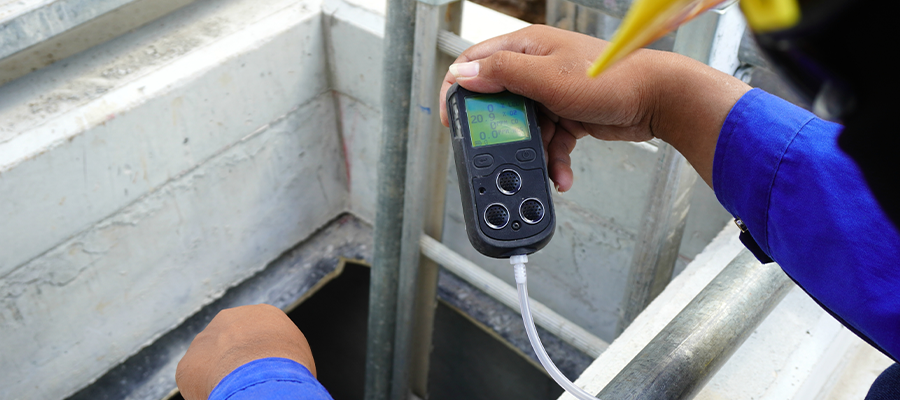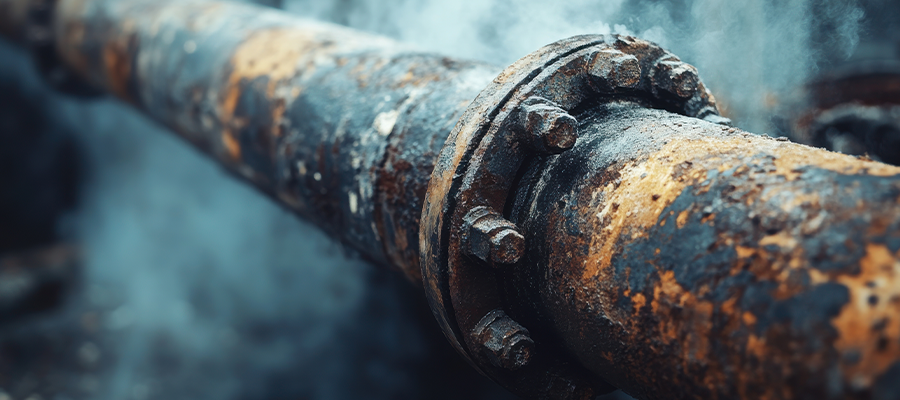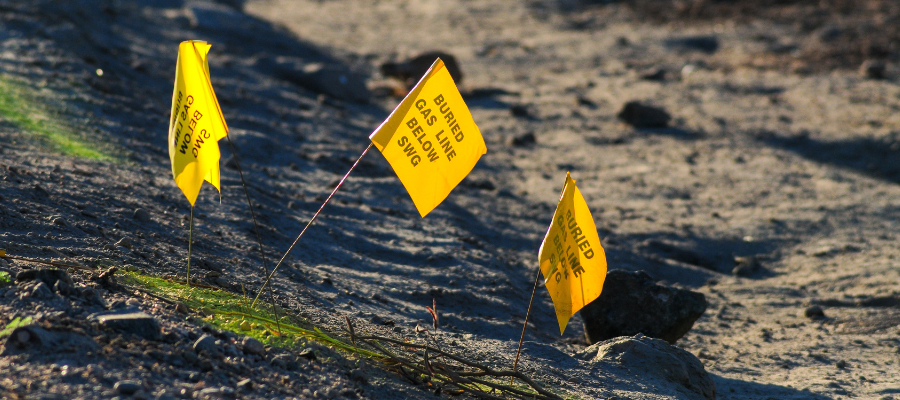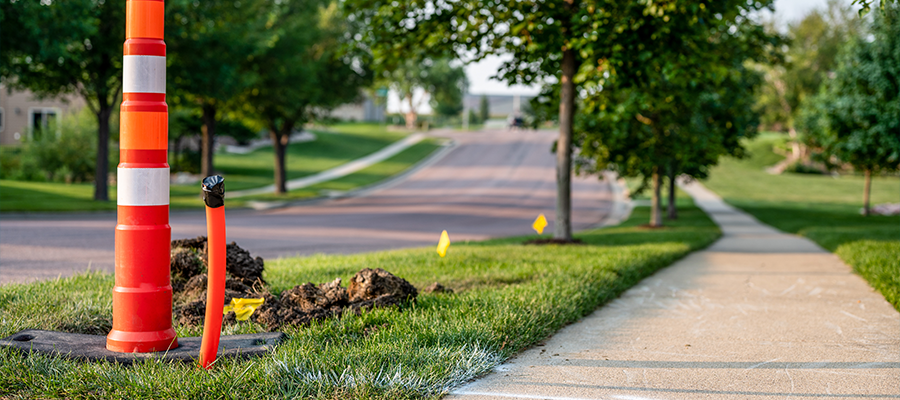Confined Space Safety Best Practices for Metering Professionals

Confined Space Safety Best Practices for Metering Professionals
By Alan Ely, Safety Manager, Bermex
Confined spaces are some of the most hazardous environments for professionals, especially in the metering services industry. These spaces, often encountered as underground vaults or utility access points, require strict adherence to safety protocols to protect workers from a range of risks, including toxic atmospheres, physical hazards, and operational dangers. Understanding the intricacies of confined spaces and implementing thorough safety measures can significantly reduce accidents, safeguard lives, and promote a culture of safety.
Confined spaces are defined by three criteria: they are large enough for workers to enter and perform tasks, they have restricted entry or exit points, and they are not designed for continuous occupancy. Examples include tanks, tunnels, silos, and underground vaults. In the metering services industry, these spaces often house equipment such as smart meters, requiring workers to perform maintenance or data collection.
Permit-Required and Non-Permit Confined Spaces
Not all confined spaces present the same level of danger. Some are classified as permit-required confined spaces (PRCS), which are areas with one or more hazards that pose a significant risk to workers. These hazards might include toxic gases, the potential for engulfment, or risks related to structural instability. PRCS demands specific safety plans, permits, and designated roles to ensure proper oversight.
Non-permit confined spaces, on the other hand, are considered low-risk environments. These spaces have undergone thorough hazard assessments and have been determined to have no serious safety threats or hazards that can’t be controlled. However, even these spaces require diligence, as changing conditions may elevate risks.
Hazards in Confined Spaces
The dangers associated with confined spaces are numerous and often invisible. Atmospheric risks, such as low oxygen levels or the presence of toxic gases like carbon monoxide and hydrogen sulfide, are among the most pressing concerns. Insufficient oxygen, defined as levels below 19.5%, can lead to asphyxiation, while excessive oxygen levels above 23.5% can increase the risk of fire or explosion.
Physical hazards are also prevalent in confined spaces. Uneven floors, poor lighting, and limited mobility create ideal conditions for slips, trips, and falls. Additionally, electrical hazards are a significant concern in areas housing metering equipment, as unprotected circuits or nearby high-voltage systems can cause electrocution. Extreme temperatures, poor ventilation, and limited escape routes exacerbate the risks, making comprehensive hazard identification a crucial first step in any confined space operation.
Establishing Safety Protocols
Before entering any confined space, workers must conduct a pre-entry assessment to evaluate potential hazards and determine the necessary safety measures. This process involves identifying the type of confined space, the presence of atmospheric or physical risks, and the controls required to mitigate those risks. Proper classification ensures that workers follow appropriate procedures, whether entering a permit-required or non-permitted space.
Atmospheric monitoring is a cornerstone of confined space safety. Before entry, workers must test oxygen levels, check for toxic gases, and assess the presence of flammable substances. Continuous monitoring is equally critical, as conditions can change rapidly, putting workers at risk. Gas detection devices must be calibrated and maintained regularly to ensure accuracy.
Ventilation is another vital component, particularly in spaces prone to poor airflow. The use of blowers or fans can help remove hazardous gases and maintain breathable oxygen levels. Proper ventilation not only protects workers but also facilitates safer and more efficient operations.
When a space is deemed a permit-required confined space, entry permits must be completed. These documents outline identified hazards, required protective equipment, and emergency procedures. They also designate authorized personnel to specific roles, such as entrants, attendants, and supervisors. Entrants perform the work, attendants monitor conditions from outside the space, and supervisors oversee the entire operation, ensuring compliance with safety standards.
Effective communication between team members is critical. Workers inside a confined space must maintain constant contact with attendants outside, often using two-way radios or other communication tools. Clear, pre-established signals ensure swift action in case of emergencies. Supervisors, meanwhile, coordinate all activities, including the implementation of emergency plans and rescue procedures.
Personal Protective Equipment (PPE)
The proper use of PPE is non-negotiable in confined space work. Hard hats protect against head injuries from falling objects or low ceilings, while gloves shield workers from cuts, abrasions, and chemical exposure. Respiratory protection, such as self-contained breathing apparatuses (SCBAs), is essential when air quality is compromised. Workers must undergo medical evaluations and fit testing to ensure respirators function effectively.
For vertical entries, full-body harnesses and retrieval systems are indispensable. These devices allow for safe entry and facilitate emergency rescues if conditions deteriorate. All PPE must be inspected regularly to ensure it remains in good working order.
The Importance of Emergency Preparedness
Confined space incidents can have catastrophic consequences, including fatalities, severe injuries, and long-term health effects. A toxic atmosphere, falls, and electrical hazards are common causes of accidents, often exacerbated by inadequate rescue plans. Tragically, many fatalities in confined spaces involve multiple victims, as unprepared coworkers attempt to rescue the initial entrant without proper equipment or training.
To prevent such outcomes, organizations must have robust emergency response plans in place. These plans should include retrieval devices, on-site rescue teams, and clear evacuation protocols. Regular rescue drills and training ensure that all personnel are prepared to respond swiftly and effectively in an emergency.
Long-Term Benefits of Strong Safety Protocols
Comprehensive safety protocols yield numerous benefits beyond accident prevention. They foster a culture of safety, boosting worker confidence and morale. Employees are more productive and less error-prone when they feel their well-being is prioritized. Operational efficiency improves as fewer incidents lead to smoother workflows and on-time project completion.
Financially, strong safety measures reduce costs associated with medical expenses, workers’ compensation claims, and equipment damage. Companies with exemplary safety records often benefit from lower insurance premiums and enhanced reputations, attracting both clients and skilled workers.
Regulatory compliance is another critical advantage. Adhering to Occupational Safety and Health Administration (OSHA) standards and maintaining detailed records of confined space activities protects organizations from fines and legal liabilities. It also positions companies as industry leaders committed to worker safety.
Best Practices for Confined Space Safety
To maintain a safe work environment, organizations should adopt best practices such as thorough pre-entry assessments, regular training, and the use of reliable equipment. Continuous monitoring and clear communication protocols are essential, as is ensuring all personnel understand emergency procedures.
Post-job reviews provide valuable opportunities to assess what went well and identify areas for improvement. Feedback from workers can inform updates to safety protocols, ensuring they remain effective and relevant.
Confined space work is challenging, but it does not have to be dangerous. By prioritizing safety at every stage, from planning and hazard identification to rescue preparedness, organizations can protect their employees and uphold the highest standards of professionalism. In doing so, they not only safeguard lives but also enhance their operational success and reputation within the industry.
Confined spaces demand respect and vigilance. With the right protocols, tools, and mindset, metering services professionals can navigate these environments safely and effectively, ensuring their work contributes to a safer future for all.
At Bermex, we understand the importance of safety in confined space operations. Our solutions help ensure your team remains protected and compliant. Ready to improve your safety protocols? Contact us today to learn more about how we can support your efforts.
Related Articles

By Mark Green, Business Development Manager, Bermex Environmental responsibility and resource conservation are more than good PR; they have become critical, bottom-line imperatives. Utility companies find themselves at the forefront of a sustainability battle that extends far beyond their traditional operational boundaries. At the heart of this challenge lies a deceptively simple yet profound issue:[...]
Read More
By Thomas Gooch, Director of Operations, Bermex Every few minutes across the United States, someone digging into the ground accidentally strikes an underground utility line. The consequences of these incidents extend far beyond the immediate damage to pipes, cables, or equipment. Utility strikes represent an extremely expensive and dangerous infrastructure challenge. The Financial Impact According[...]
Read More
By David Mack, Senior Business Development Manager, Bermex When it comes to preventing utility damages, most organizations focus on technology, training, and regulations. But at the 2025 CGA Conference & Expo, a powerful theme emerged from multiple speakers, including Dr. Victoria Grady of George Mason University: culture, not compliance, is the foundation of lasting safety[...]
Read More
By Sam Hickey, Content Specialist, ACRT Services The 2025 CGA Conference & Expo brought together hundreds of stakeholders from across the country — utilities, contractors, 811 centers, technology providers, and field service organizations — to address one shared mission: reducing damages to underground infrastructure. With the CGA’s “50 in 5” challenge as a backdrop, this[...]
Read MoreCategories
Recent Posts
- Diffusing a Difficult Customer [Infographic] 10th Sep 2018
- Neighborhood Safety [Infographic] 24th Sep 2018
- Bermex Has Named Keith Pancake as New Safety Manager 02th Dec 2019